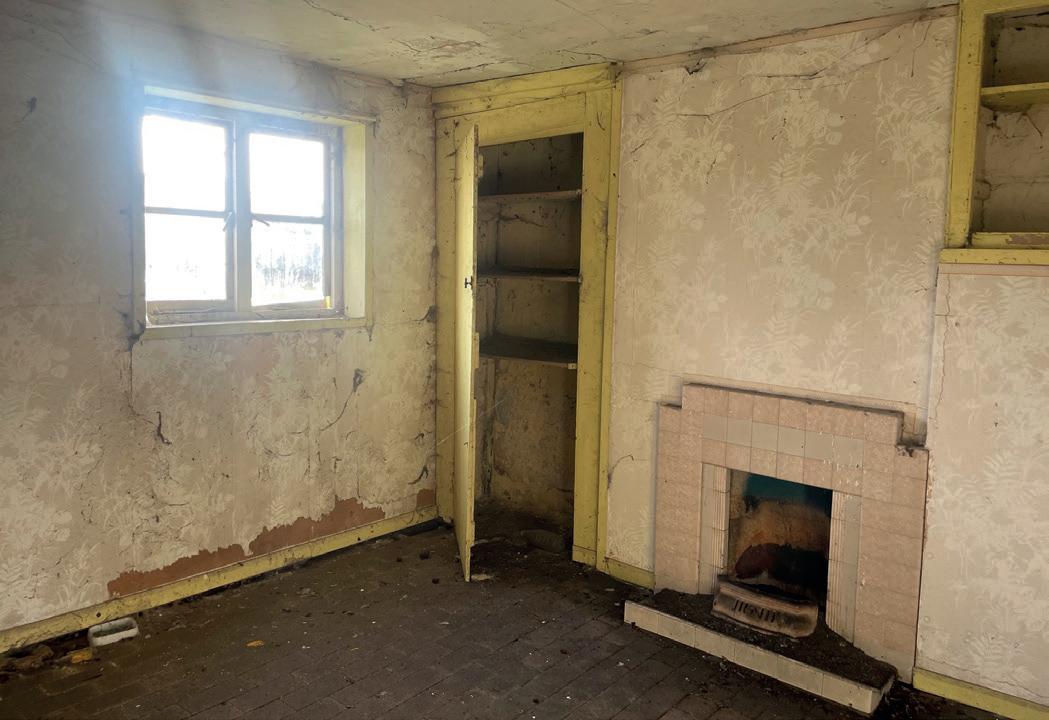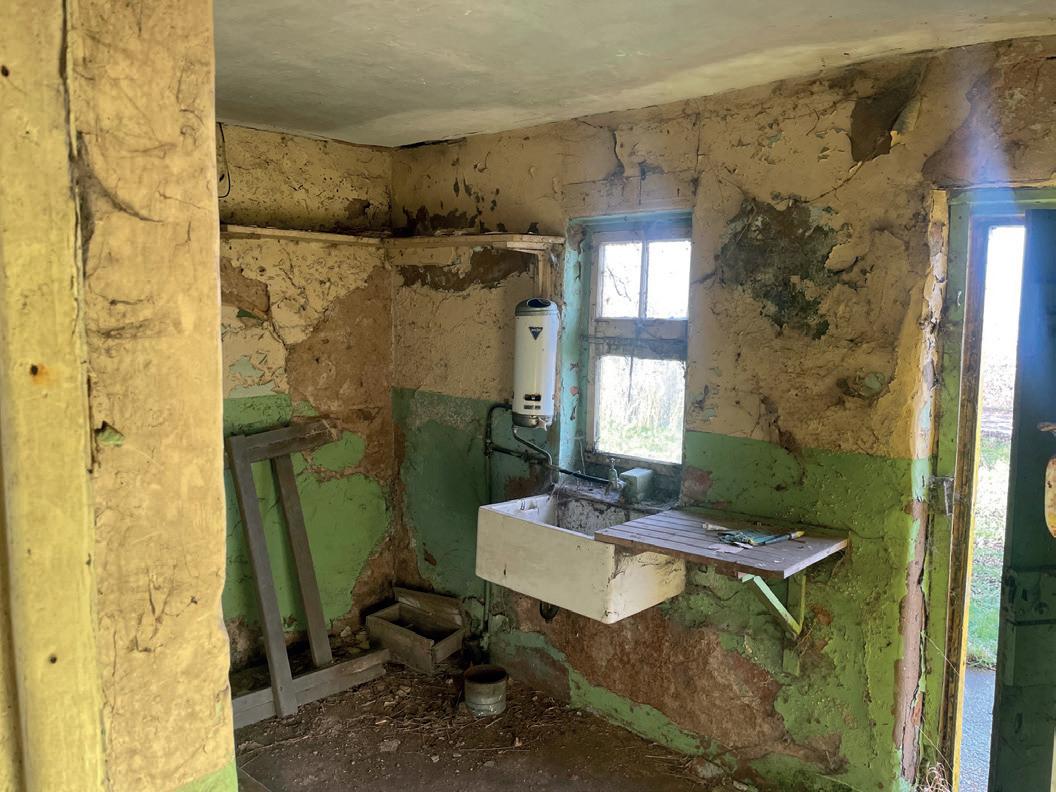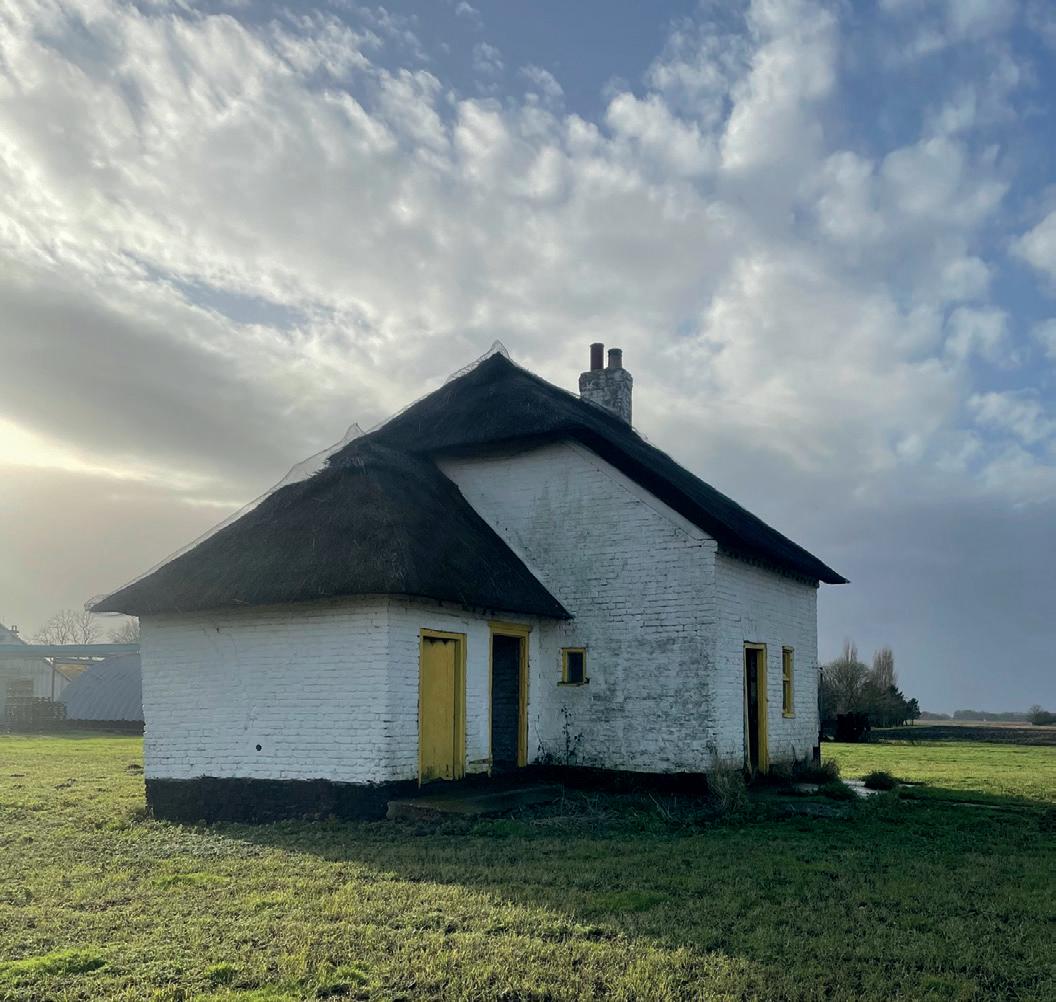
6 minute read
57-64 Heritage
from Village Tribune 127
Home sweet home: Canary Cottage, c.1750
Past Dwelling in the Want to be a House-Detective? by Greg Prior and Avril Lumley Prior
Advertisement
With test-pitting outlawed during Lock-down and our treeplanting programme completed, Peakirk Archaeology Survey Team (PAST) has kept busy over winter by updating the village Heritage Record and delving into the history of Greg’s cottage.
Playing at being ‘housedetectives’ was so addictive and rewarding that we would like to encourage you to try it too, either as an individual or family activity or as part of a community project. Whether it is a converted bakery, barn, chapel, chippy, forge, postoffice, pub, school, shop, station, almshouse, manorhouse, Victorian two-up-twodown, 1930s semi or council flat, every dwelling is unique because of the influence of its inhabitants. Since there are no deadlines to meet, you can pick up your research and put it down when the mood takes you and add details and illustrations of the improvements you’ve made and your vision of your ideal home. Thus, your househistory becomes a ‘living’ chronicle of its past, present and future.
Has it been modernised?


What about new-builds?
Well, your house does not have to be ancient to be interesting. The setting can be equally fascinating, especially if there are any significant topographical features in the vicinity or a noteworthy event has happened nearby. For instance, Peakirk’s Penwald Close was built on Neaverson’s Timber Yard (adjacent to the railway) and some of the St Pega’s Road properties stand alongside and even on top of the Car Dyke Roman watercourse. Glinton’s Welmore Road overlays part of a medieval field system and Northborough’s Church Farm surrounds an AngloSaxon settlement. So, you could always explore your home’s relationship with its environment.
Getting started
Initially, the prospect may seem rather daunting, so we suggest that you tackle it in bitesized pieces. There are many books on the subject. David Iredale’s and John Barrett’s Shire Publication, Discovering Your Old House (1991) is a handy, comprehensive guide
What were the out-buildings used for?

and you can always refer to our Trib. article (Issue 126, pages 49-56: available online, if you’ve binned it). However, rather than get bogged down with any background reading at this stage, it is probably easier to make a list of what you hope to find out, beginning by determining whether anyone has surveyed your house before. Indeed, if it is a Listed Building, there will be some basic data on the website. You can also try Googling your address or neighbourhood to see what pops up. It could save you a lot of time and effort.
If nothing is forthcoming, next try to discover when your home constructed. Has it been subdivided or have two or three houses been morphed into one? What was its original function? Why was it built here? What materials were used? Were any of them recycled? If so, where did they come from? Has it the house been modernised or adapted? When were the amenities (water, electricity etc) laid on? What were the out-buildings used for? Who lived in our house before? Why did they/we come to live here? You are bound to think of more questions as work progresses, though you may not find all the answers!
Hunting for clues
Undoubtedly, after the building itself, the most important sources are the Deeds and any attached architectural drawings and site-plans. These should disclose ownership, tenancies, any structural alterations and maybe a clue to its date. Old Ordnance Survey Maps, prints and photographs may also give some idea of dating or what was there before. You will find the maps on the excellent National Library of Scotland website. The 1840s-1960s OS Six-Inch Series (Northamptonshire) are particularly user-friendly (and printable – but copyright and, therefore, for personal use only). Peterborough Images Archive website has a superb collection of photographs of Tribland villages and you may be lucky enough to spot your house and note the changes. Archaeological finds including pottery sherds dug up in your flower-bed may tell you about your home’s place in the general scheme of things. For example, whilst excavating a pond in Avril’s 1970s garden, she was thrilled to unearth a chunk of colourful mosaic - until she realised that it came from an Edwardian dairy that occupied the site and not from a Romano-British villa!
And, please, do listen to local gossip! Often, there really is “no smoke without fire”! Sometimes, the half-forgotten remembrances from 50, 60, 70 years ago can lead to a tremendous break-through – or direct you down another avenue of research. Crucially, make notes as you go along. Research not recorded is research lost forever . .
Why did they come to live here?

Appendix: The iconic Canary Cottage featured in the photographs is a well-loved landmark, on private land off the A47 at Thorney Toll. It is understood to have been erected for a shepherd or agricultural labourer c.1750, shortly after Knarr Fen was drained. Yet, distance lends enchantment to the view for the dwelling’s accommodation was exceedingly Spartan by today’s standards. Its only concessions to modernity were a 1930s tiled fireplace and a calor-gas powered waterheater, fortuitously installed before the ‘Big Freeze’ of the winter of 1962/63. The last of Canary Cottage’s hardy tenants, Thelma and Ken Wright, left in 1965. It is now a Grade II Listed Building in dire need of some TLC.
What next?
If you live in an older property, once you know the names of your predecessors you may wish learn more about them and how they earned a living. Again, local intelligence is a bonus but can also be sketchy and conflicting. You can access more-detailed information through Census Returns (1841-1911), Births, Death and Marriage Records, Parish Registers, Electoral Rolls and Trades’ Directories. Normally, these sources are available for you to peruse at Peterborough Central Library’s Archives, where knowledgeable staff would help you in your quest. Alas! The facility is suspended due to the pandemic. But take heart! You still can do it all from home. The Census Returns, ‘Hatched, Matched and Dispatcheds’ etc can be consulted by subscribing to a genealogical website like Ancestry® or Findmypast. Moreover, Leicester University’s Special Collections Online offers a free though limited selection of Trades’ Directories for the years between 1841 and 1914. (Remember, Tribland was in Northamptonshire then.)
Why bother?
For fun, for posterity, personal satisfaction or the simply the innate desire to find out more about the place you call home? Besides, your endeavours can blossom into greater things. In some villages, residents have displayed abridged househistories in their windows and on garden-fences, whilst Frieda Gosling rallied the good folk of Helpston to publish theirs in an attractive gazetteer, Exploring the Heritage of Helpston (2017).
PAST would love to coordinate similar projects for Peakirk and Glinton - if there is enough interest, that is. Normally, we could hold workshops or meet in the Blue Bell or Ruddy Duck to chat about your findings, swap tips and for mutual support; but in the current climate all we can provide is online help (to the best of our ability) and an ultrabrief case-history below as an exemplar. If you are interested, please, email Avril or message her via Facebook and we will be in touch.








